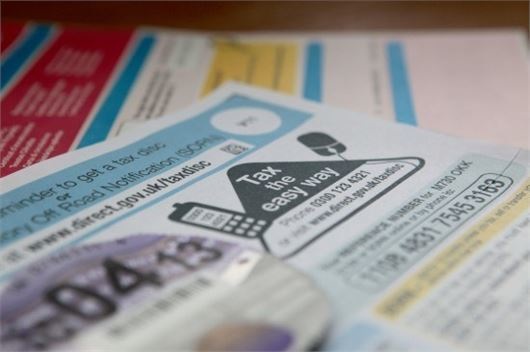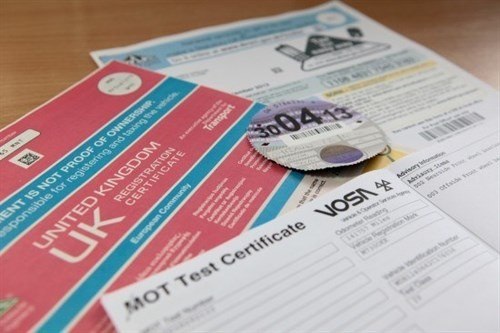
Cars built before 1976 will qualify for free road tax from 1 April 2016, Chancellor George Osborne has announced.
To join this club of tax-free classics, all you have to do is prove your car was built (not registered) before January 1, 1976.
But don’t be fooled – this isn’t done automatically. If you’ve got a car that now qualifies for free Vehicle Excise Duty then you’ll have to do a bit of paperwork. We spoke to the Federation of British Historic Vehicle Clubs to find out where to start.
Such a task can be overwhelming, but one thing is clear – apply immediately, rather than waiting until you current period of tax has expired.
There is some good news, though. If the vehicle was registered between 1-7 January, 1976, the DVLA will let you register it as a historic vehicle, based on the assumption that the vehicle would have been made in the previous year.
How to apply for the Historic Vehicle tax class
First of all, you’ll need to take the following documents will need to be taken to a motor tax post office.
The V5C Registration Certificate. In the change section, put the tax class as Historic Vehicle, and sign and date the V5C. (Ignore any legacy note relating to DVLA Local Office.)
A V10 Application for a Tax Disc. On the form indicate a tax class of Historic Vehicle. (Ignore any note relating to an insurance certificate requiring to be produced).
Valid MoT Certificate.
The post office will retain the V5C and post it onto DVLA in order for them to change the tax class to Historic Vehicle and issue a new V5C. Subsequent V11 Renewal Reminders should have the tax class of Historic Vehicle.
Top Tip
As with any official communication, we’d suggest you to make a photocopy of all documents that are sent to DVLA.

Getting a refund
Once the vehicle has been taxed as a Historic Vehicle, it will be possible to get a refund for each full calendar month left on the tax disc. Even better – there isn’t a form to fill in. Since the tax disc was abolished in October 2014, a refund is automatically issued when you change your vehicle to an exempt tax class.
What to do if you’ve lost your V5C
Part of the process for claiming the Historic Vehicle tax class is that the V5C needs to be amended. If the V5C has been lost or mislaid then to get a replacement one it will be necessary to fill in a V62 form. This form is calledApplication for a Vehicle Registration Certificate. The current fee for a replacement V5C is £25.
What to do if the engine size on your V5C is wrong
The vast majority of tax classes are dependent on engine size/type. This means that when an engine change, or correction of the engine details, is notified to DVLA, there needs to be independent verification of the new engine details before DVLA will accept the change. The Historic Vehicle tax class is one of the few tax classes which is independent of engine size, so changes in engine size/type are not subject to independent verification by DVLA.
If the engine details on a 1973 vehicle are incorrect, it will be clerically simpler for the owner if the amended details are notified to DVLA on the new V5C that indicates the tax class of Historic Vehicle, seeing that no independent verification of engine size/type would then be required.
What to do if your vehicle is wrongly dated
If the year of manufacture needs correcting, then there should be contemporary documentary evidence, which should either be an extract from the manufacturer’s records, which indicates chassis numbers, or an extract from the appropriate Glass’s Check Book. The Glass’s Check Books come in three versions for cars, commercial vehicles, and motorcycles. The appropriate specialist vehicle club should be able to assist in providing a copy of the appropriate Glass’s Check Book, or extract from the manufacturers records, but they could well charge a fee for this service.
Note that a dating letter on its own will not be sufficient to get the year of manufacture corrected. There needs to be contemporary evidence, which will include a chassis number, or bandwidth of chassis numbers and dating information.
To correct the year of manufacture the documentary evidence and the V5C will need to be sent to DVLA. Only when the corrected V5C has been issued, will it be possible to go along to the Post Office with the newly issued V5C and claim the Historic Vehicle tax class.
Historic Vehicles – the small print
The existing usage criterion continues. This is the definition contained in the DVLA leaflet V355/1 called Notes about Taxation Classes. ‘All vehicles,except buses and goods vehicles used commerciallyare exempt from vehicle tax if they were constructed before 1/1/1975. See leaflet INF34.’If a bus or goods vehicle is used commercially, there is not an entitlement to apply for the Historic Vehicle tax class.
For more information
The DVLA information leaflet which explains about the Historic Vehicle tax class is leaflet INF34 that is calledTaxing Historic Vehicles. This will be revised by DVLA to reflect the changes being made. You can download this leaflet by clicking here, call 0300 790 6802 or email:stores.order@dvla.gsi.gov.uk.
This article is care of Honest John’s Website, and the original article can be found here!

